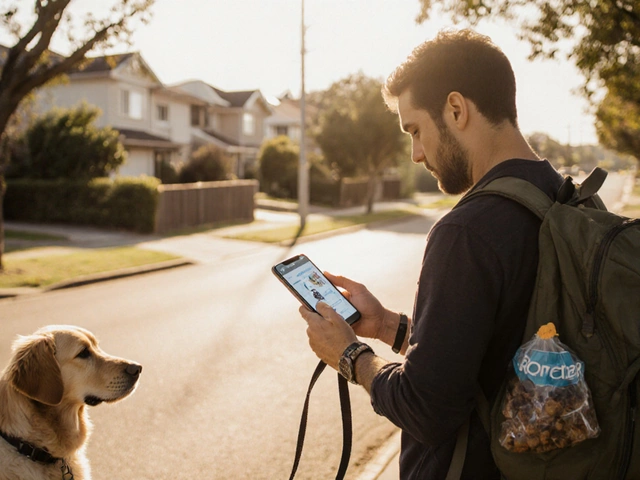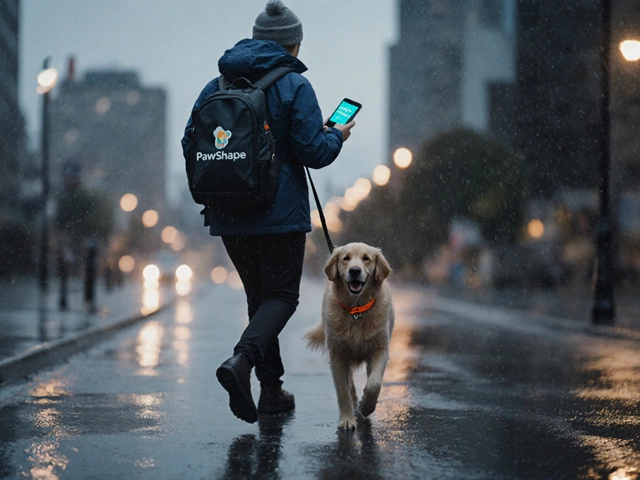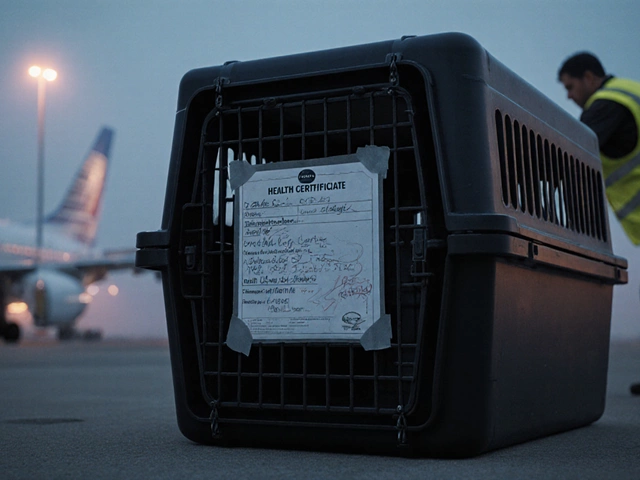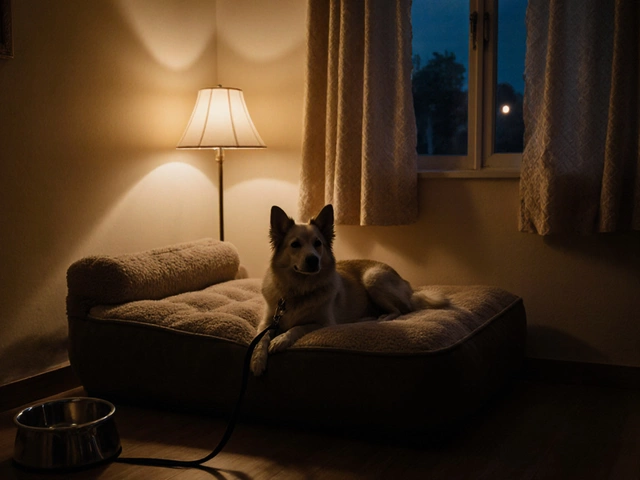
Picture this: you land a window seat for your first vacation in years, look down, and there’s a pair of big, trusting doggy eyes peering up from the aisle. Now you’re wondering, ‘Wait—can dogs actually claim a seat next to me on a plane?’ Whether you’re daydreaming about stretching out with your pup 35,000 feet above ground or just trying to avoid awkward run-ins with flight attendants, you’re about to learn what airlines really allow, what it’ll cost, and how you can pull it off (if at all).
Do Airlines Allow Dogs on Seats? Unraveling the Official Pet Policies
It’s easy to picture your dog curled up in their own padded airplane seat, but most airlines see things a little differently. The fact is, dogs in the cabin are there under strict rules—think of TSA, but with more fur and far fewer smiles. Across the U.S. and most international carriers, only specially documented service dogs get that coveted spot on the passenger seat. These are working dogs, not your off-duty house pet. The ADA (Americans with Disabilities Act) gives individuals with disabilities the right to bring their service animals onboard and, in some cases, let them sit or lay in the footwell or on the floor at their owner’s feet—never blocking the aisle. The seat is usually off-limits.
Emotional support animals, which once had extra freedom, lost their wings in January 2021. The Department of Transportation updated the rules so that ESAs are now treated like regular pets—not service animals. What’s that mean? They’ve got to fly in a carrier under the seat in front of you, not lounging next to the peanuts and SkyMall.
Airline policies vary, but here’s what most of the big names say:
- American Airlines: Only service dogs can sit at your feet; pets under 20 lbs must be in a carrier under the seat. No pets allowed in seats—even if you buy an extra ticket.
- Delta: Service dogs may stay with their handler; carriers must stay under seats. Seats for dogs are a no-go.
- United: Small dogs (and cats) allowed in-cabin in an approved carrier; service dogs sit on the floor. Extra seats can’t be booked for dogs.
- Southwest: Only pets in carriers under seats are allowed; no animals in passenger seats.
- JetBlue: Your pet stays in a carrier under the seat, regardless of how many seats you book.
International airlines share the same mood. British Airways, Air France, Lufthansa, and others keep non-service pets in carriers below the seat. Some, like Emirates, don’t allow pets in the cabin at all unless they’re registered service animals.
But what if your dog is an emotional support pro without the formal service vest? Sorry, buying an extra ticket won’t get Fido a seat—airlines specifically deny this loophole. Cabin rules are fiercely enforced, partly due to safety and partly because, let’s face it, not everyone wants a wagging tail in their lap during takeoff sip.
Ready for a side-by-side look at U.S. airline policies for pets in the cabin? Here’s a handy chart to show what to expect.
| Airline | Pet in Cabin | Dog in Seat Allowed? | Service Dog (Seat/Floor) | Pet Fee (USD) |
|---|---|---|---|---|
| American | Yes (carrier required) | No | Floor only | 125 |
| Delta | Yes (carrier required) | No | Floor only | 95 |
| United | Yes (carrier required) | No | Floor only | 125 |
| Southwest | Yes (carrier required) | No | Floor only | 95 |
| JetBlue | Yes (carrier required) | No | Floor only | 125 |
So, you can’t buy your dog a seat next to you and let them ride “first class” unless your pet’s working and wearing an official vest. Most of us just have to accept that dogs stick to their soft-sided carrier caves under the seat until landing.
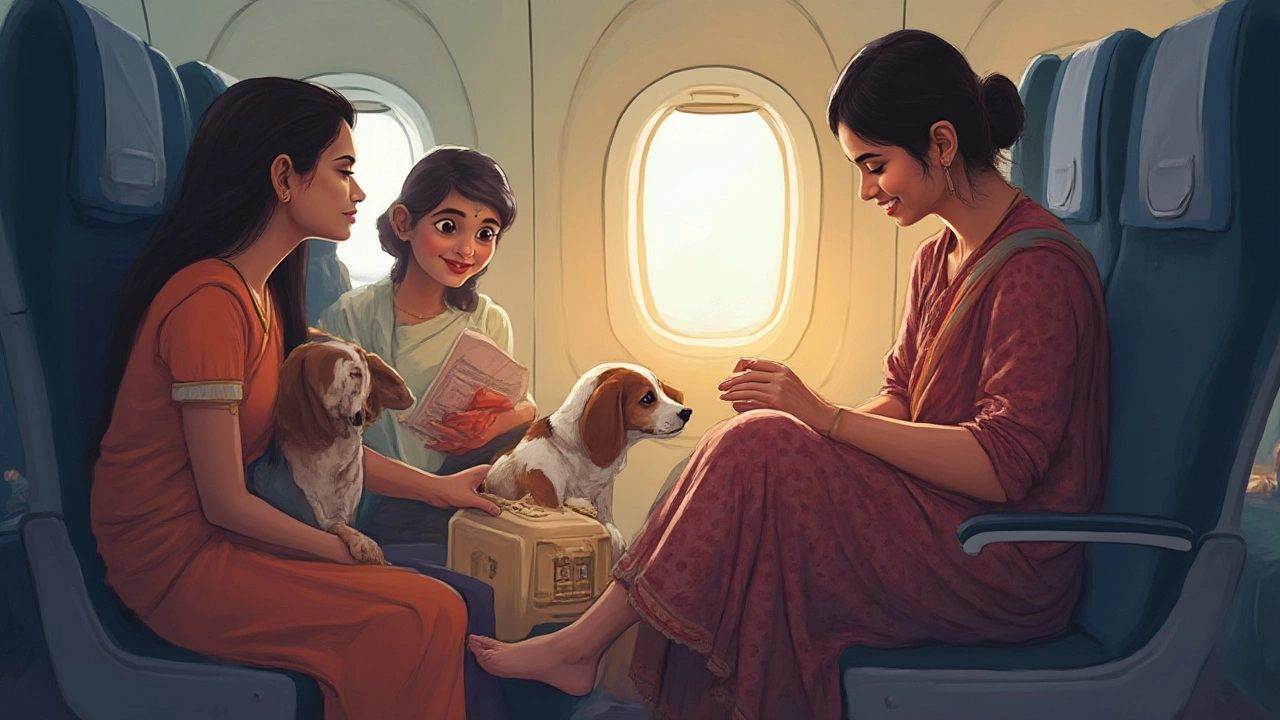
Making Plane Travel Safe and Comfortable for Your Dog
Okay, so dogs aren’t getting their own sky lounge. But flying with your dog airplane seat can still be a chill experience for both of you if you plan right. Everything starts with that carrier. Airlines are strict—with good reason. The carrier has to fit under the seat in front of you and let your pup stand, turn, and lie down. Skip the hard plastic crate unless you’re checking your dog as cargo (which, honestly, isn’t recommended for most pets). Most airlines max carrier dimensions at 18” x 11” x 11” (that’s roughly a duffle bag, not a suitcase). Measure your dog before you book anything. Weight limits range anywhere from 15 to 20 pounds—just enough for a Chihuahua, Frenchie, or a Jack Russell on a lean day.
Microchips, vaccines, paperwork—yes, it’s a lot. You’ll need proof of updated rabies shots (dated within the last year is golden), and sometimes a vet health certificate signed within 10 days of departure. International flights get gnarlier: you might also need tapeworm treatments, country-specific forms, and sometimes a passport for your dog. If you’re heading to the UK, Hawaii, or Australia, quarantine rules get strict; look up every stopover long before you book.
Now for some real-world tips:
- Book early and tell the airline about your pet—they have a limited number of in-cabin animals per flight.
- Even if you love the window, aim for an aisle; there’s often more room under those seats.
- Bring absorbent pee pads. Dogs get nervous and you don’t want an accident at 30,000 feet. Tuck a few extras in your carry-on.
- Skip feeding a few hours before flying—hunger is better than a mid-flight tummy issue.
- Freeze a small, leak-proof water cup; it’ll melt during the flight and keep your pup hydrated without sloshing all over the carrier floor.
- Chew toys and a favorite blanket beat the boredom and muffle the scary sounds of takeoff and landing.
- Ask your vet if a calming treat or mild anti-anxiety med makes sense for nervous flyers. Never DIY with human drugs, though.
The biggest win? Tire your dog out before you board. Go for a long walk, run, or play session. A worn-out dog is a sleepy, better-behaved traveler.
If your dog’s too big for the cabin, airlines offer (sometimes scary) cargo options. But even with “pet safe” cargo sections, summer heat can be a major danger—sometimes fatal. According to a 2022 DOT report, there were 7 deaths among 256,000 animals flown as cargo that year, and most were large breeds in summer months. It’s another reason small dogs get the travel perks and why owners of big pups often choose road trips or pet-friendly trains instead.
Some dog owners swear by flying private, where a chartered jet will let your pooch ride at your side or even stretch out on the couch. If money isn’t a problem and you’re really devoted to your dog’s in-flight comfort (and, you know, not above $8,000 per trip), this is as close to seat-sharing as you’ll get. There are even modern “Paws on Board” style group charters popping up, but spots sell out fast and prices are, let’s say, not for everyone.
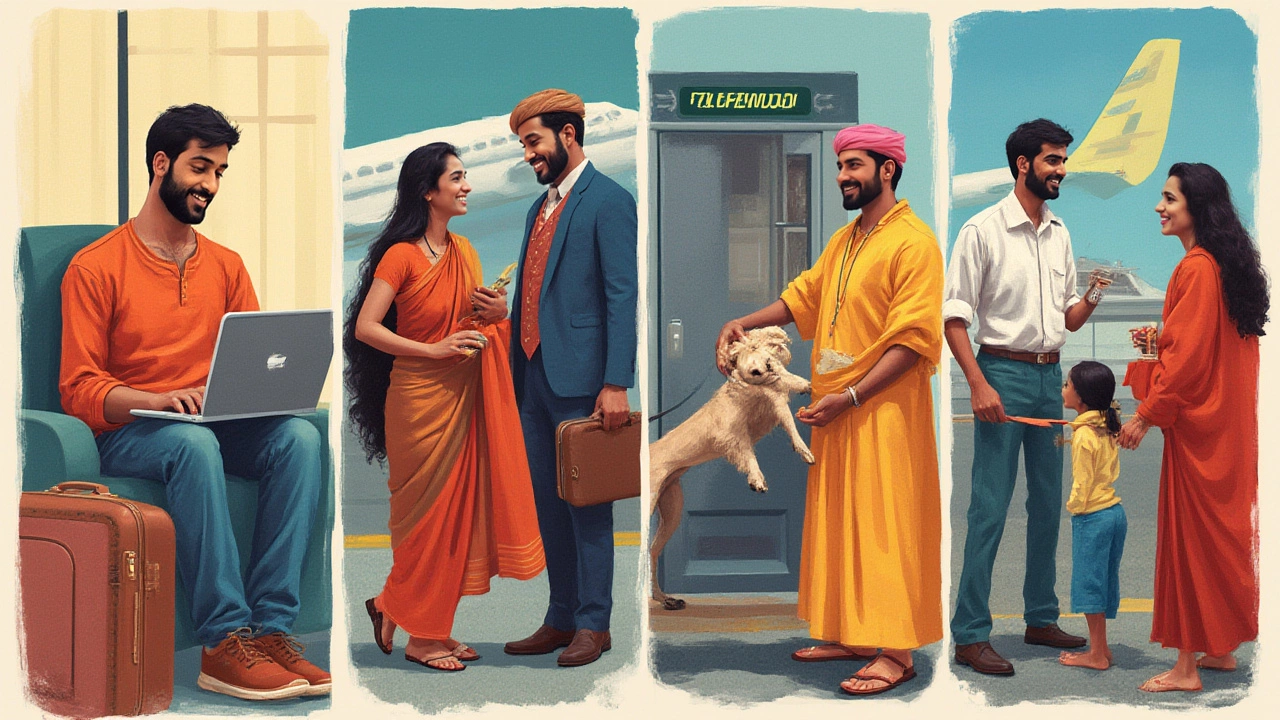
Stories From the Aisle: What Happens When You Break the Rules?
We all know someone who tries to skirt the rules—“But he’s basically my child!” Airlines, though, aren’t moved by puppy dog eyes. Getting caught with your dog out of their carrier, sprawled on a seat, or milling around the cabin gets you a firm warning at best or an unplanned nap in airport security at worst. One notorious 2023 story involved a TikTok influencer sneaking her small dog onto a Spirit flight, letting him sit on the tray table. The result? Removed from the plane before takeoff, refund denied, and a potential ban from the airline.
Flight attendants have seen it all—dogs in baby slings, dogs under coats (as if no one detects a wagging tail), and even dogs tucked into gym bags. Most airlines have now trained crew to do a full pre-boarding check, and folk who fib on paperwork can get a hefty fine or lose their right to fly with any animals going forward.
That said, you’ll always spot working service dogs stretching across their handler’s feet, completely chill even as snacks roll by. No one bats an eye at these hardworking pups. If you actually do have a service dog, always bring proper documentation and be ready for questions. If the animal causes trouble, like barking or whining during the flight, even service dogs can be asked to deplane in rare cases.
Gate agents sometimes show a little flexibility, especially on empty flights or red-eye hauls, but this is the exception. An extra seat for your dog will just be an empty seat. Don’t expect an exception just because your four-legged friend is extra cute.
One little-known hack? Some first-class and business cabins (especially on international routes) offer oversized footwells and flexible space. While your pet still stays in the carrier, the extra room can take the edge off for anxious dogs—and humans. Always double check this with the airline, since policies can update every year. In 2025, as more airlines try to woo pet-owning travelers, there’s hope for slightly better in-cabin options. Still, mainline rules haven’t changed since the COVID-19 pandemic reset pet travel standards in a big way.
If serious seat-sharing is your goal, consider Amtrak or pet-friendly buses, where weight rules are looser and the atmosphere’s just a bit more paws-on. Big dogs, though, are still best left to road trips where you’re the captain and every rest stop is a potential treat break.
So here’s where the story lands: dogs on airplane seats are a no-go for regular pets under every major airline’s policy today. Service dogs? Sure, they get that spot at your feet. For everyone else, it’s cozy under-seat carriers, toy-stuffed duffels, and a healthy stash of treats. If you dream of a dog sprawled seat-to-seat at 35,000 feet, you’re gonna need a private jet...or a little imagination, and maybe an Instagram filter.


